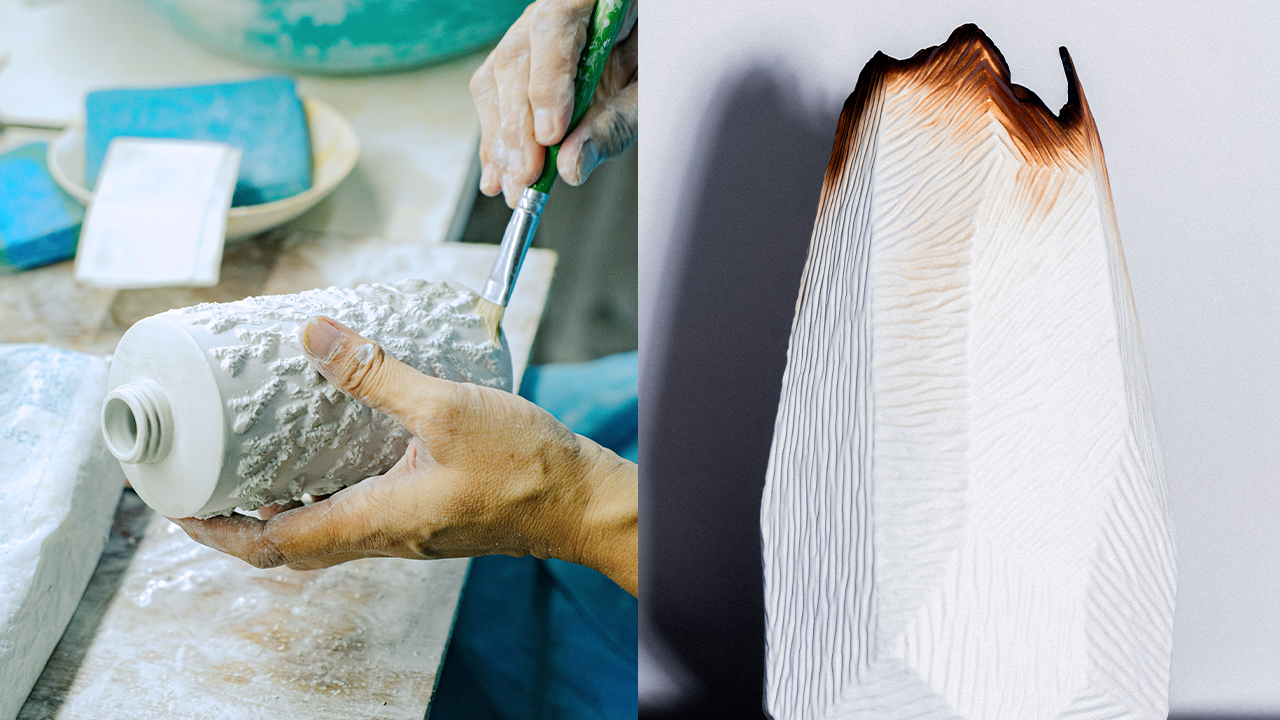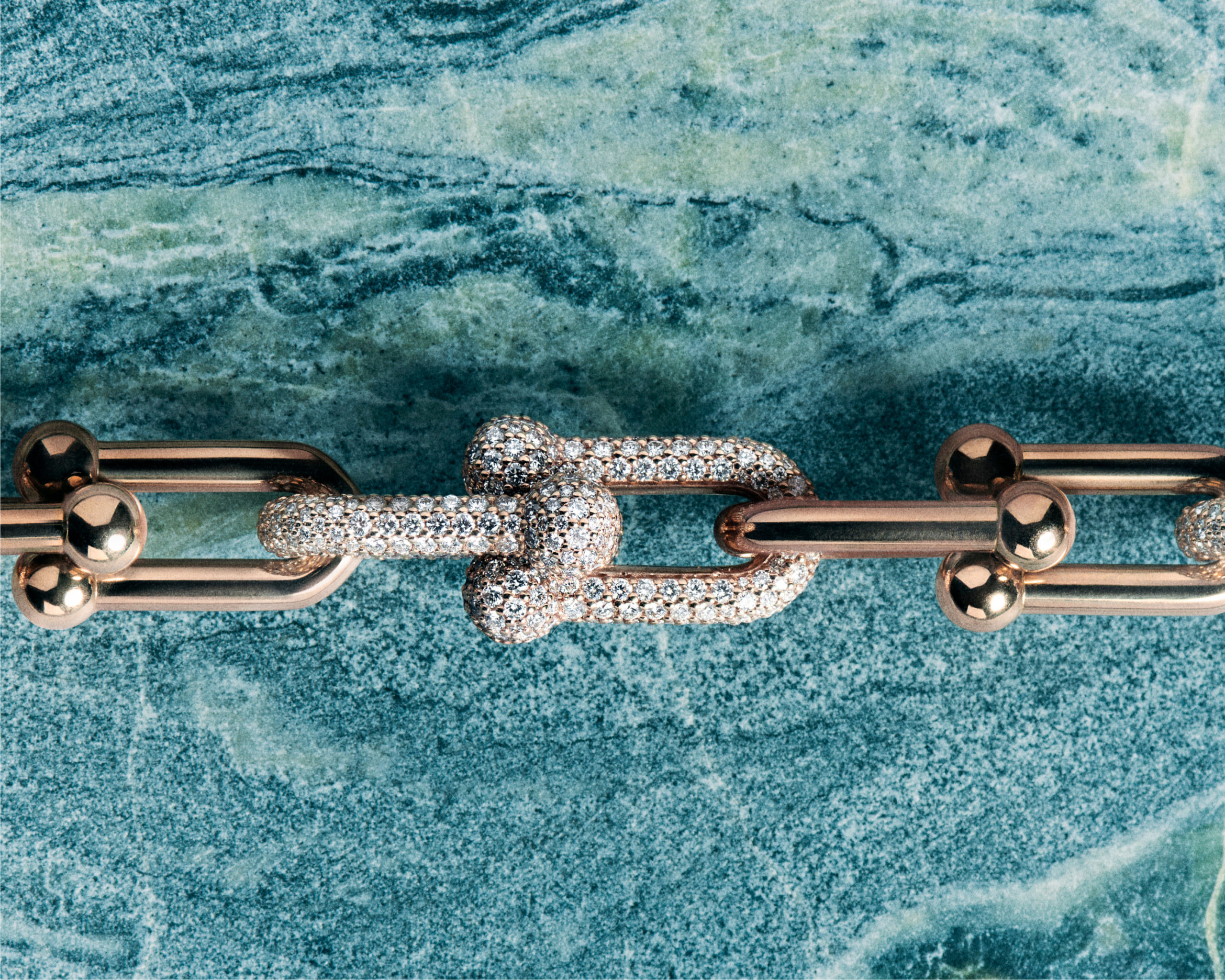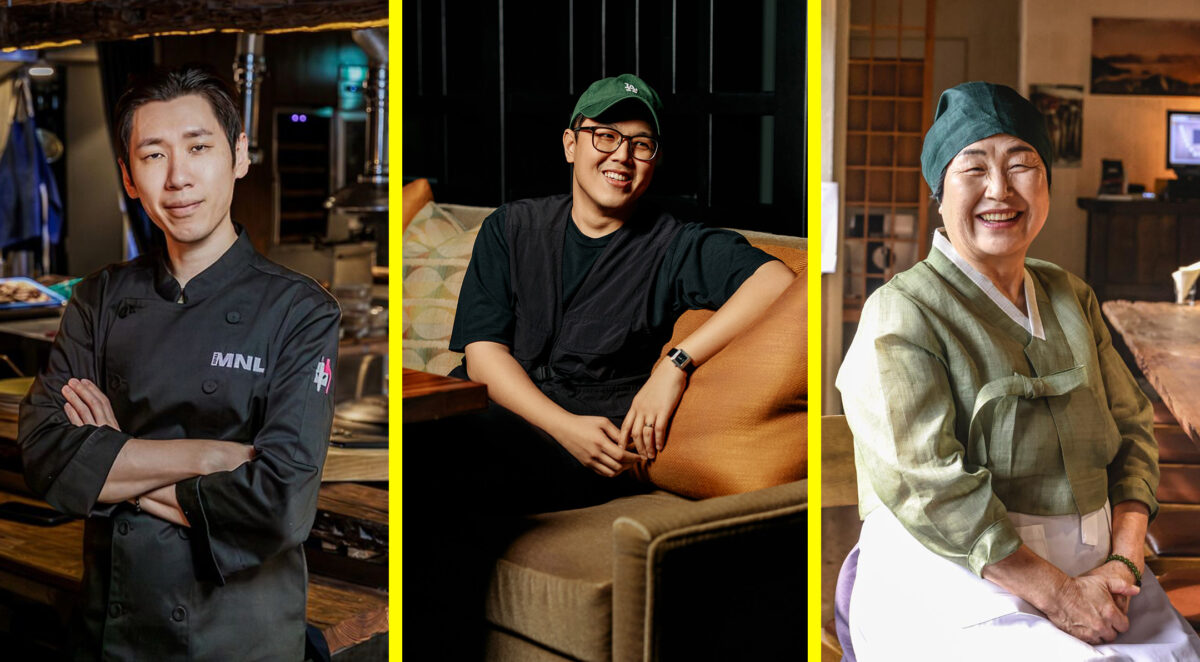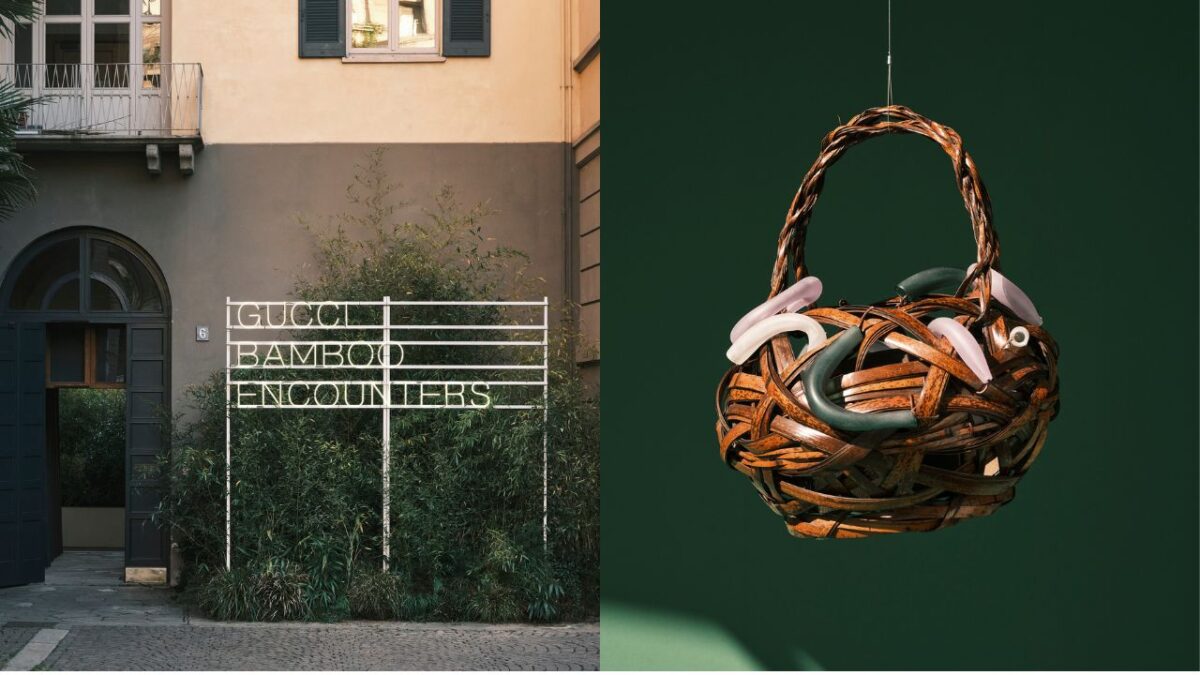Today, there are only around 30 factories and workshops around the world that produce fine bone china—that is, pottery and homeware made of bone ash. One of those factories, which serves and delivers products to some of the biggest international homeware brands right now, can be found in Biñan, Laguna, just 15 minutes off the Carmona exit on the South Luzon Expressway.
By Enrico Manrique’s own admission, not many people know what they do at CSM Philippines, the fine bone china and fine porcelain manufacturing company his late father Clemente built 30 years ago. Filipinos don’t know that the bone china pottery they can buy from international brands such as Crate & Barrel and Pottery Barn is handcrafted right here in the country and exported for the world to enjoy.
That lack of recognition and acknowledgment by our own is why the young Manrique decided to pivot a little and create the brand Finebone. Finebone is the sophisticated and easily identifiable face of CSM, which Clemente had been content to operate behind much bigger vendors while he was alive. Where CSM had simply manufactured pieces for others (which it still does, managed by Enrico’s sister Erika), Finebone directly sells some of the factory’s creations as its own.
This way, Finebone spotlights and promotes the legacy of the industry Clemente had sustained for decades. In doing so, Enrico hopes that more Filipinos realize that they have a world-class industry here, somewhat hiding in plain sight.
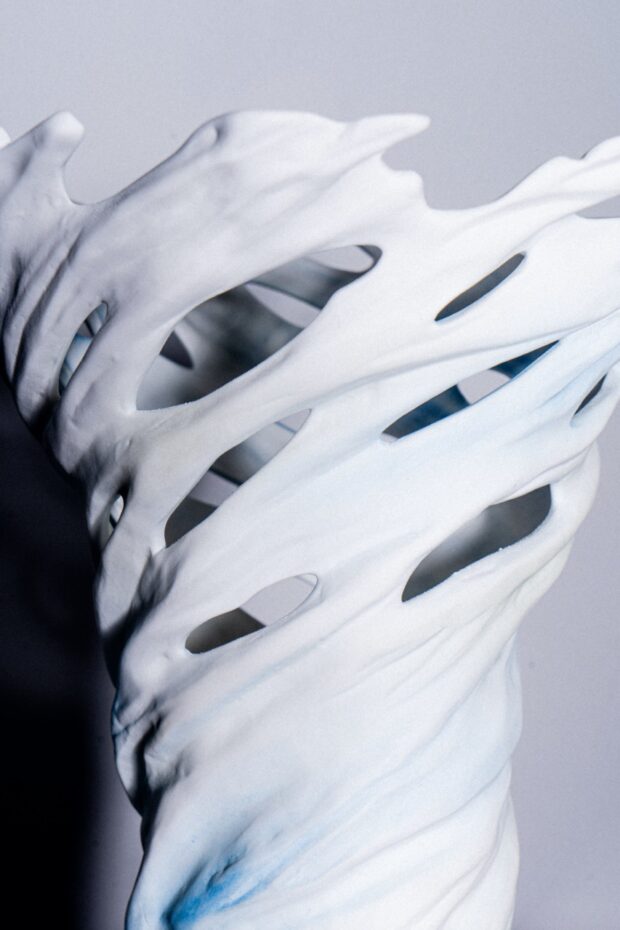
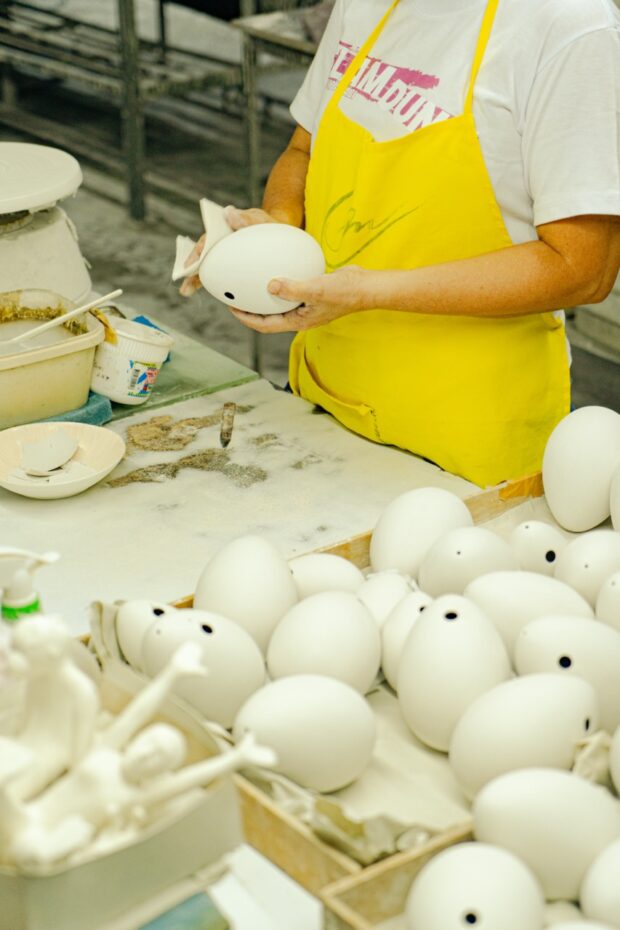
The secret key to 30 years of quality craftsmanship
The Manriques’ formula has remained virtually unchanged in the 30 years (and more) that CSM has been around.
Formed in 1994 after the ceramics manufacturer the elder Manrique had worked for closed down following an economic crisis, CSM’s key to ensuring high-quality materials is making its own fine bone clay. The clay is hand-mixed from dried cow bones—the purest and cleanest kind of bone there is—brought to them every day from dumpsites for them to mill for 48 hours. Cow bones give the natural whiteness fine bone china is known for.
“It’s like our secret ingredient,” says Enrico, as he begins a tour of their Biñan factory, which the family has been renting for many years. CSM began in the Manrique garage, and expansions in the volume of orders necessitated a much bigger workshop. “We’re probably among the last 30 factories in the world that make authentic fine bone china.”
Once milled, the fine bone ash is fermented for 90 days to remove impurities, and even subjected to magnets to remove any loose iron particles, which could turn the clay black.
The clay is then mixed by hand and further fermented for two more weeks. “We really don’t have any ‘advanced technology’ here in the factory, we do it all by hand,” shares Enrico. “It’s what makes it authentic.”
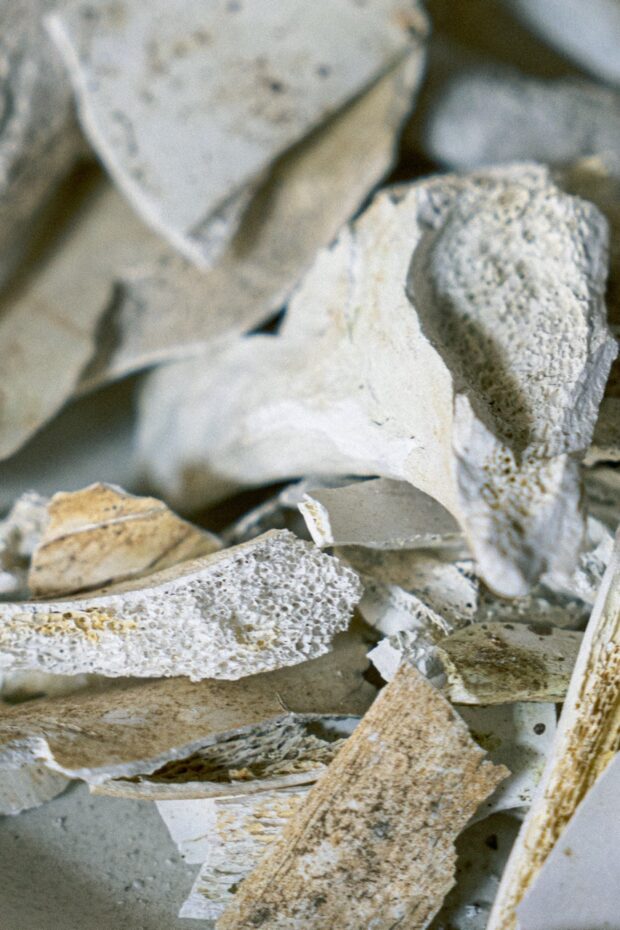
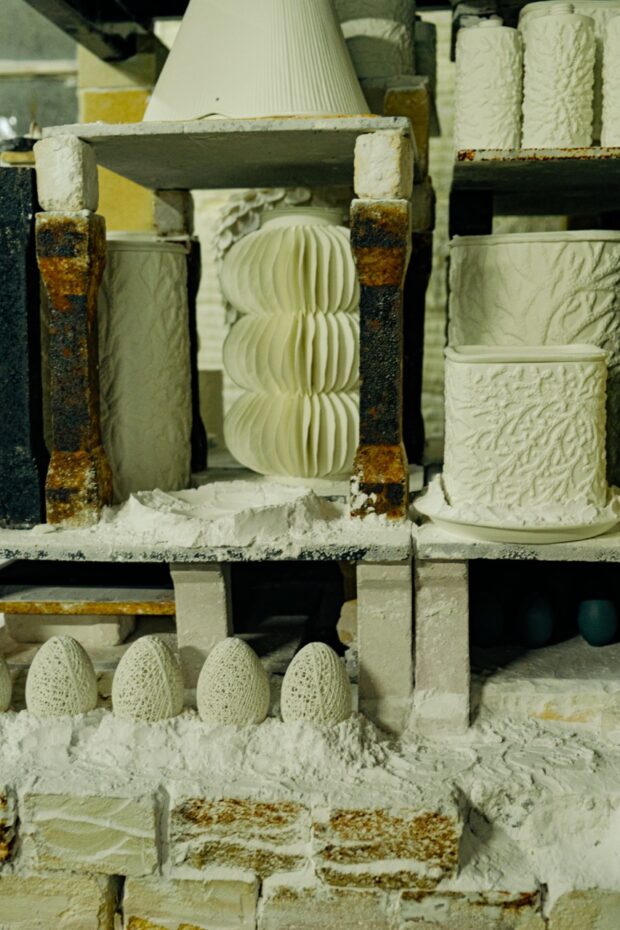
The fine bone clay needs to constantly swirl and churn to avoid hardening, as the material settles quickly. The clay keeps moving until it’s time for the liquid clay to be molded in a cast and finely sculpted, again by hand.
CSM employs an in-house designer, the elder Manrique’s longtime lieutenant who has more than 40 years of experience drawing up pottery. But big clients will often have their own design specifications that the factory simply follows. Individual clients are also free to submit their own designs and specs for any commissioned work.
Most of CSM’s employees tasked to sculpt and fettle (the trimming of rough edges) the pieces, many of whom are women, don’t necessarily come from a fine arts background—they are just trained on the job. The sculpture is also done completely by hand, as the selling point of fine bone china pottery is its handcrafted look and aesthetic.
From sculpting, the pieces are then fired in CSM’s modern kilns to harden, then painted according to the design. Once a piece is ready, CSM even packages its own products as most shipping services aren’t quite familiar with packaging the bone china pottery.
From there, they get sent to clients around the world. The CSM factory can produce around 50,000 pieces a year, which cements their status as a needed resource for huge brands.
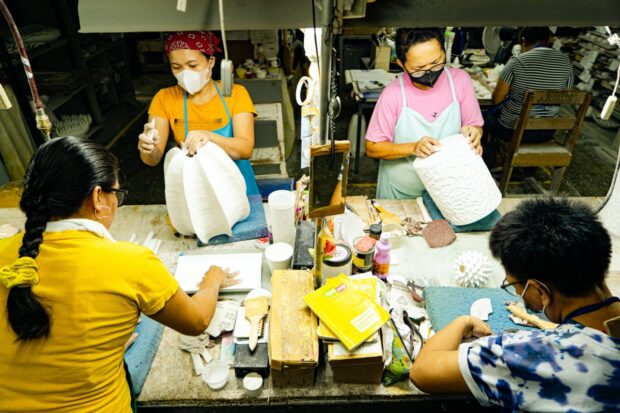
The next step of fine bone china’s evolution
While CSM and Finebone prides itself on handcrafted fine bone china pieces, the aging industry and art form is starting to struggle in terms of its continuity. If there’s any innovation and upgrade that Manrique is heavily considering, it’s moving into the space of 3D printing.
“Hand sculpting is slowly, gradually disappearing,” says Enrico, with a faint hint of worry in his voice. “We have friends in the north who ask us to do sculpting work because even in Benguet, there are no more sculptors.”
Even with continued demand of sculpted fine bone china, Enrico knows that they must soon face evolution. Fortunately, the family has begun to prepare. “The time is soon coming, I think, which is why we’ve started outsourcing 3D printing models from time to time so that we can make the molds here.”
Unlike many other cases of modernization, 3D printing in the Manriques’ industry isn’t supplanting human effort—it’s becoming a necessity because not enough humans are learning it anymore.
“It’s actually a dying industry. We don’t get enough new young employees,” admits Enrico. “While we do get a few, those who really last long are those 38 years old and above. They don’t have to come from an artistic background—as long as there is the drive to learn, as long as they’re hardworking, we’ll take on anyone.

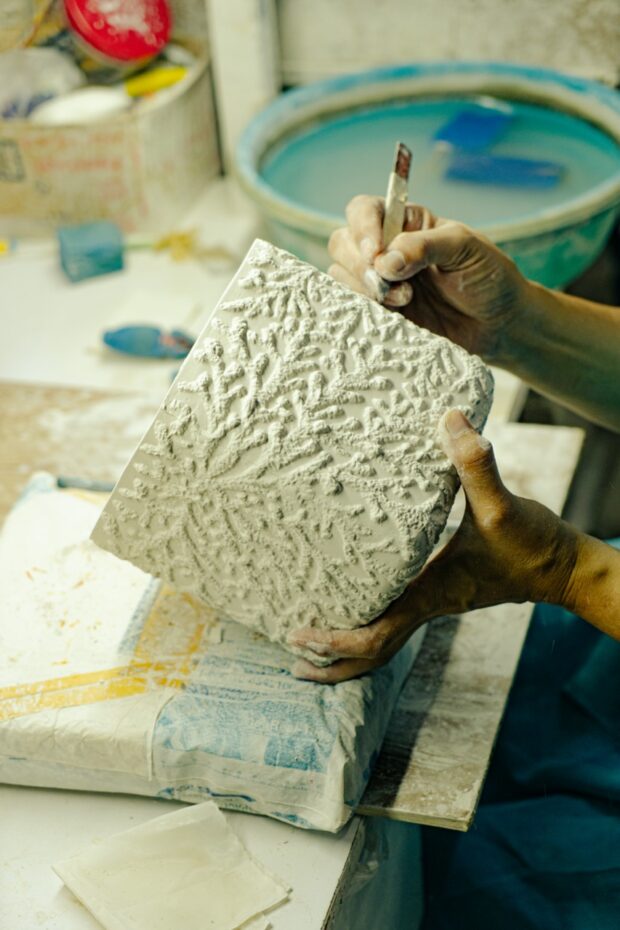
“We actually hire a lot of people from packaging companies, from industrial backgrounds, and they just learned the skills when they came here.”
Despite these fears, what has continued to work in CSM and Finebone’s favor is the innate “imperfect” beauty of fine bone pottery.
“As much as possible, we want to hand-sculpt the pieces on our own in-house,” Enrico says. “The 3D printing is for objects with precise measurements, which is the weakness of hand-sculpting. But our strength is the organic and natural look. We avoid ‘precise’ looks, and the clay itself does not lend well to precision; we don’t want to look too manufactured, and every piece is different.”
After assuming the company from their late father, the Manriques have ensured that his legacy will survive for the foreseeable future—even if it means doing things he would have frowned upon. CSM and Finebone have moved into making larger homeware pieces, which the elder Manrique didn’t like doing as it was more prone to errors. The family had made their money and staked their reputation on perfecting smaller pieces, but the market wanted bigger, so Enrico made the call to adjust and learn along the way.
“Never in his wildest dreams would my father accept orders for large pieces,” says Enrico. “He really didn’t want it. But this is how we survived today, by accepting them.”
And if there’s anything that will save the Manriques’ industry, it’s the youthful touch of setting up Finebone as the face of Filipino fine bone china. Finebone is not only the final step of elevating the fine bone china industry into the art form it truly is, but it also seems to be Manrique’s way of finally getting the recognition his father was due for the 30 years of work and passion they have poured into their creations.
The Finebone brand has only been around since 2020, a small fraction of the family’s long and storied industry, but today Manrique has exhibited their work in places such as the Manila Fame exhibition and the Tokyo International Gift Show.
More than anything, fine bone china from the Philippines is far from being on its last legs—in fact, its story may have just begun, and its future seems very much safe.

